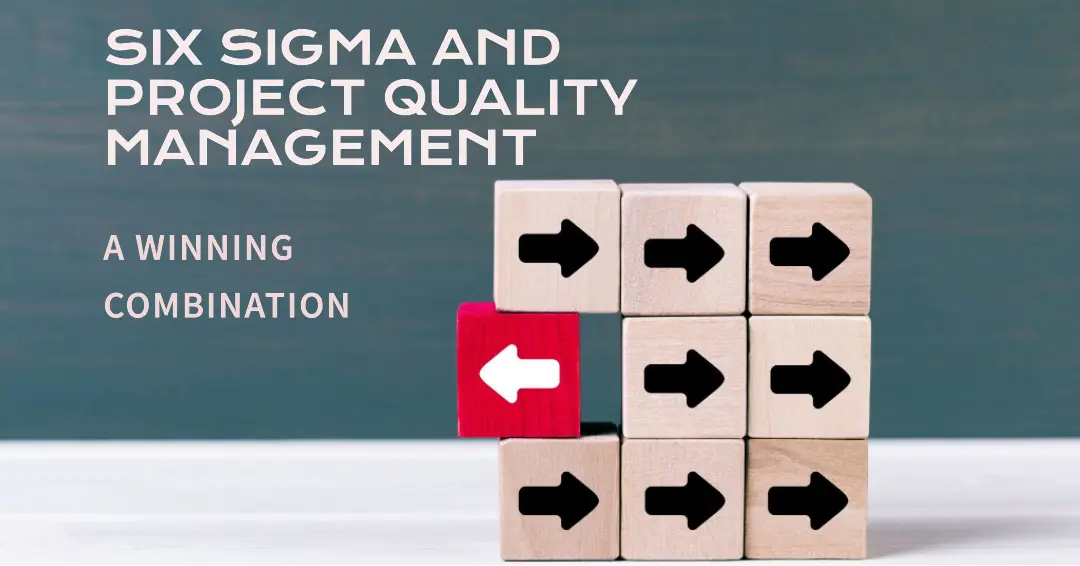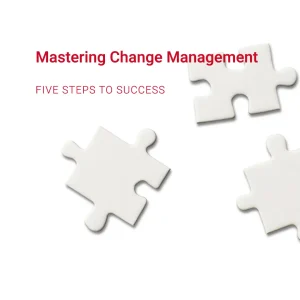To find out how Artificial Intelligence is changing the Project Management landscape, you may enjoy reading this article https://www.shaunstoltz.com/did-artificial-intelligence-just-change-everything-about-project-management/
I. Introduction
Hello, fellow project management enthusiasts! If you’ve been searching for the secret sauce to supercharge your project’s quality and performance, you’ve come to the right place. In today’s fast-paced, competitive business environment, we know how crucial it is to ensure that every project delivers the best possible results. And that’s where the powerful duo of Six Sigma and Project Quality Management come in.
I’m excited to share with you how integrating Six Sigma into your Project Quality Management efforts can lead to a winning combination. From boosting customer satisfaction to reducing waste and defects, this tried-and-true methodology has proven time and time again to be a game-changer for many organizations.
In this blog post, we’ll delve deep into the world of Six Sigma and Project Quality Management, exploring their key principles, methodologies, and benefits. We’ll also look at some real-life case studies, showcasing how this integration has helped organizations like yours achieve incredible results. So, grab your favorite cup of coffee, and let’s embark on this fascinating journey together!
II. Understanding Six Sigma
A. Definition and origin of Six Sigma
Before we dive into the nitty-gritty, let’s make sure we’re all on the same page about what Six Sigma is. Six Sigma is a data-driven, customer-focused, and results-oriented approach to process improvement. It was first developed by Motorola in the 1980s to reduce defects and improve quality in manufacturing processes. Since then, it has expanded its reach to various industries, helping organizations streamline operations, reduce waste, and enhance customer satisfaction.
B. Key principles of Six Sigma
Now that we know what Six Sigma is, let’s explore the key principles that make it such an effective tool for improving project quality and performance.
- Define, Measure, Analyze, Improve, Control (DMAIC) process:
At the heart of Six Sigma is the DMAIC process, a structured methodology for identifying, measuring, analyzing, improving, and controlling processes. This step-by-step approach ensures that improvements are data-driven, well-thought-out, and sustainable.
- Focus on customer requirements:
Six Sigma emphasizes the importance of meeting or exceeding customer expectations. By identifying critical-to-quality (CTQ) characteristics and addressing the voice of the customer (VOC), you ensure that your project delivers what really matters to your clients.
- Data-driven decision-making:
Gone are the days of relying on gut feelings or hunches. Six Sigma champions evidence-based decision-making. By collecting and analyzing data, you can pinpoint the root causes of problems and make informed decisions to drive improvement.
C. Six Sigma certification levels (Green Belt, Black Belt, etc.)
You might have heard people mentioning Six Sigma “belts” and wondered what that’s all about. Well, Six Sigma uses a martial arts-inspired system to designate expertise levels. These range from White Belt (basic understanding) to Master Black Belt (top-level expert). Earning a Six Sigma certification not only showcases your expertise but also helps you grow as a project manager by equipping you with valuable problem-solving and analytical skills.
Now that we’ve got a good grasp of Six Sigma, let’s shift gears and explore Project Quality Management, and how these two methodologies can be integrated for maximum impact.
III. Understanding Project Quality Management
A. Definition and importance of Project Quality Management
Let’s talk about Project Quality Management, another essential ingredient in our winning combination. At its core, Project Quality Management is all about ensuring that your project’s deliverables meet the required standards, specifications, and stakeholder expectations. It’s not just about avoiding errors and defects; it’s also about creating value and delivering the best possible outcomes for your clients and organization.
B. Project Quality Management processes
Project Quality Management is a continuous process that covers every phase of your project. It consists of three primary processes:
- Plan Quality Management:
This is the stage where you define your project’s quality requirements and objectives. You’ll identify quality standards, specify acceptance criteria, and determine how you’ll achieve and measure quality throughout the project. Planning is crucial – as they say, “failing to plan is planning to fail.”
- Perform Quality Assurance:
Quality assurance is all about making sure your project’s processes are effective and efficient. You’ll evaluate your project’s performance, conduct audits, and identify opportunities for improvement. The goal is to prevent defects and ensure that your project stays on track to deliver high-quality results.
- Control Quality:
During the control quality phase, you’ll monitor and measure the quality of your project’s deliverables. You’ll compare actual performance against planned performance and make adjustments as needed. This process helps you catch defects early, reducing rework and ensuring that your project meets or exceeds its quality objectives.
C. Role of a Project Quality Manager
A Project Quality Manager plays a pivotal role in driving quality management efforts. They are responsible for developing and implementing quality plans, monitoring performance, and ensuring that the project team adheres to established quality standards. They’re also the go-to person for resolving quality-related issues and guiding the project towards continuous improvement.
Now that we have a solid understanding of both Six Sigma and Project Quality Management, let’s explore how integrating these two methodologies can take your project performance to the next level.
IV. Integrating Six Sigma into Project Quality Management
A. Benefits of integrating Six Sigma in Project Quality Management
So, why should you consider integrating Six Sigma into your Project Quality Management efforts? Let’s look at some of the fantastic benefits this powerful combination can bring to your projects:
- Improved project performance:
When you apply Six Sigma principles to your project management processes, you’re setting the stage for enhanced efficiency and effectiveness. The data-driven approach helps you identify and address the root causes of problems, leading to better decision-making and improved project outcomes.
- Reduced waste and defects:
By implementing Six Sigma techniques, you can pinpoint areas of waste and inefficiency within your project. This helps you eliminate defects, reduce rework, and save valuable resources, time, and money.
- Increased customer satisfaction:
Remember, Six Sigma is all about focusing on customer requirements. When you prioritize meeting or exceeding customer expectations, you’ll not only achieve higher quality deliverables but also create loyal, satisfied customers who keep coming back for more.
B. DMAIC process applied to Project Quality Management
Now let’s see how the DMAIC process can be applied to Project Quality Management:
- Define: Clearly outline your project’s quality objectives and identify the critical-to-quality (CTQ) characteristics that matter most to your customers.
- Measure: Collect data to establish a baseline of your project’s current performance. Determine the key performance indicators (KPIs) that will help you track your progress towards your quality goals.
- Analyze: Examine the data to identify trends, patterns, and root causes of any quality issues. Look for opportunities to improve your project’s processes and performance.
- Improve: Implement changes and improvements based on your data analysis. This may involve redesigning processes, adjusting resource allocation, or refining your quality management plan.
- Control: Continuously monitor and measure your project’s quality performance, making adjustments as needed to maintain or improve results. Establish a system to ensure that improvements are sustained over time.
C. Case studies: Successful Six Sigma and Project Quality Management integration
To further illustrate the benefits of this winning combination, let’s take a look at some real-life case studies:
- A leading automotive manufacturer used Six Sigma methodologies to streamline its product development process, reducing defects by 50% and cutting time-to-market by 40%.
- A global pharmaceutical company implemented Six Sigma techniques to improve its clinical trial processes, resulting in a 30% reduction in trial delays and a 25% decrease in data entry errors.
These success stories show just how powerful Six Sigma and Project Quality Management can be when working together. By leveraging their complementary strengths, you can drive your projects towards excellence and achieve outstanding results.
V. Challenges in Implementing Six Sigma in Project Quality Management
While integrating Six Sigma into Project Quality Management can lead to incredible results, it’s important to acknowledge that it’s not always a walk in the park. There are some challenges you might encounter along the way, but fear not! With a proactive approach, you can overcome these obstacles and set your project up for success. Let’s take a look at some common challenges:
A. Organizational resistance
Change is never easy, and introducing Six Sigma methodologies into your organization may be met with some resistance. Employees might be hesitant to adopt new practices, fearing that it could lead to extra work or even job loss. The key to overcoming this challenge is to communicate the benefits clearly, address concerns, and involve your team in the process.
B. Initial cost and resource investment
Implementing Six Sigma may require a significant investment in time, resources, and training, which can be daunting for organizations. However, it’s crucial to view this as a long-term investment. The improvements in project performance, reduction in waste, and increased customer satisfaction will pay dividends in the long run.
C. Maintaining focus on continuous improvement
One of the central tenets of Six Sigma is the pursuit of continuous improvement. It can be challenging to maintain this focus, especially when your team is juggling multiple priorities. However, by regularly revisiting your quality goals and involving your team in improvement efforts, you can ensure that your project stays on track to deliver outstanding results.
Now that we’ve identified some potential challenges, let’s explore some tips for implementing Six Sigma in Project Quality Management successfully.
VI. Tips for Successful Implementation
Successfully integrating Six Sigma into your Project Quality Management efforts requires a thoughtful approach and commitment from your entire team. Here are some tips to help you navigate this process and set your projects up for success:
A. Gaining executive support and buy-in
Having the backing of your organization’s top leaders is crucial for the successful implementation of Six Sigma. Their support not only provides the necessary resources and authority but also sends a clear message to the rest of the organization that quality improvement is a top priority. Be sure to present a compelling case highlighting the benefits of Six Sigma and how it aligns with your organization’s strategic objectives.
B. Effective communication and training
As with any significant change, communication is key. Keep your team informed about the goals and progress of your Six Sigma efforts. Offer training and support to help them develop the skills and knowledge needed to contribute effectively. Remember, a well-informed and empowered team is more likely to embrace change and drive improvement.
C. Identifying and prioritizing projects for Six Sigma integration
Not all projects may be suitable for Six Sigma integration right away. Start by identifying projects that have a significant impact on your organization’s performance and customer satisfaction. Prioritize projects that align with your strategic objectives and have the potential to deliver quick wins. This will help you demonstrate the value of Six Sigma and build momentum for further implementation.
With these tips in mind, you’re well on your way to harnessing the power of Six Sigma and Project Quality Management to drive your projects towards excellence. Remember, the journey towards continuous improvement is ongoing, so stay committed, be adaptable, and never stop learning.
VII. Conclusion
As we wrap up our exploration of Six Sigma and Project Quality Management, I hope you’re feeling inspired and motivated to embrace this winning combination. By integrating these methodologies, you can unlock the potential to improve project performance, reduce waste, and increase customer satisfaction, all while fostering a culture of continuous improvement within your organization.
Don’t forget that the journey towards mastering Six Sigma and enhancing your Project Quality Management efforts is an ongoing process. Embrace the challenge, stay curious, and continue to learn and grow. Consider pursuing Six Sigma certifications to further expand your knowledge and demonstrate your commitment to excellence in project management.
Finally, I encourage you to take the first steps towards integrating Six Sigma into your Project Quality Management processes today. Your projects, your team, and your customers will thank you for it. So, go forth and conquer, my fellow project management enthusiasts, and here’s to your future success!
Find out more about Shaun Stoltz https://www.shaunstoltz.com/about/
This post was written by an AI and reviewed/edited by a human.



